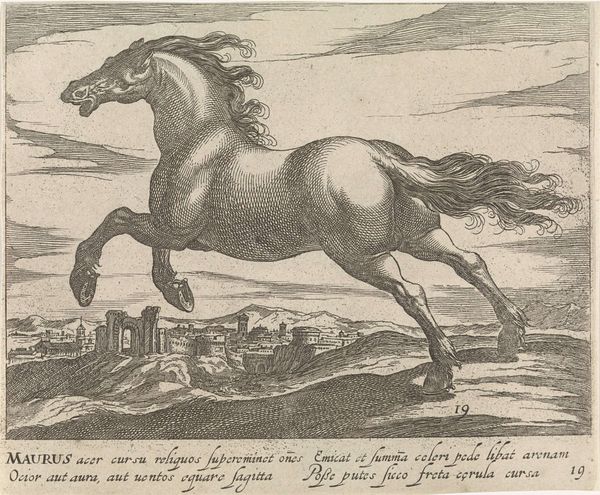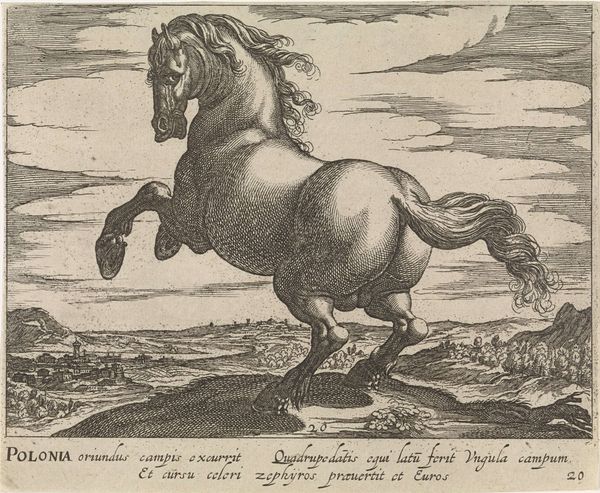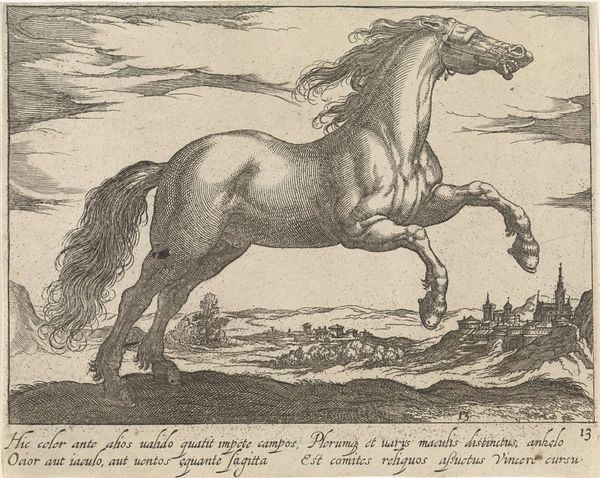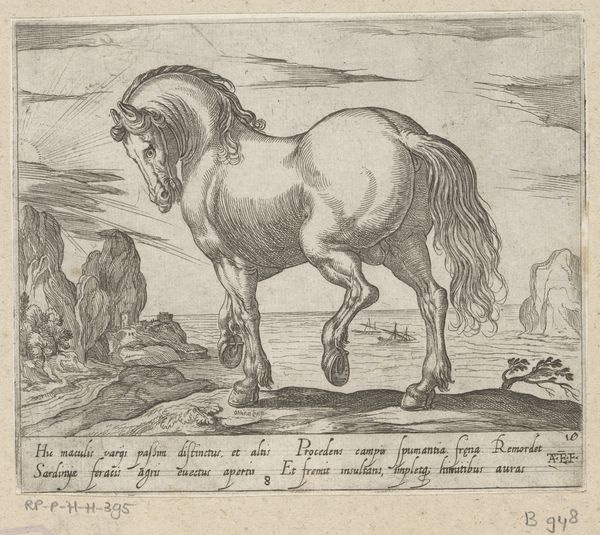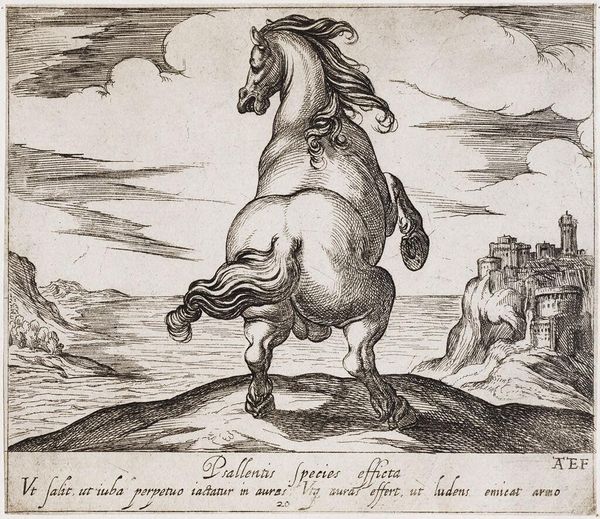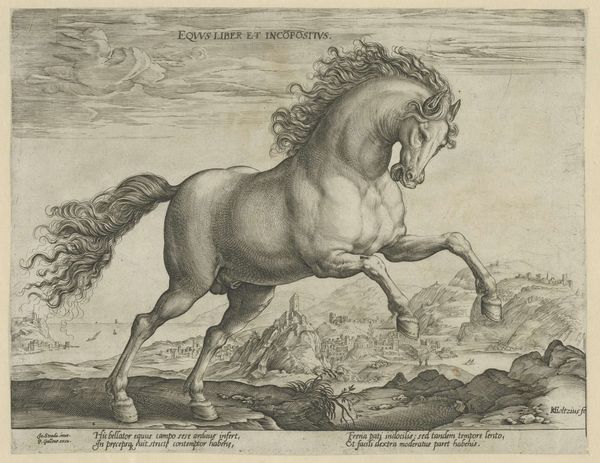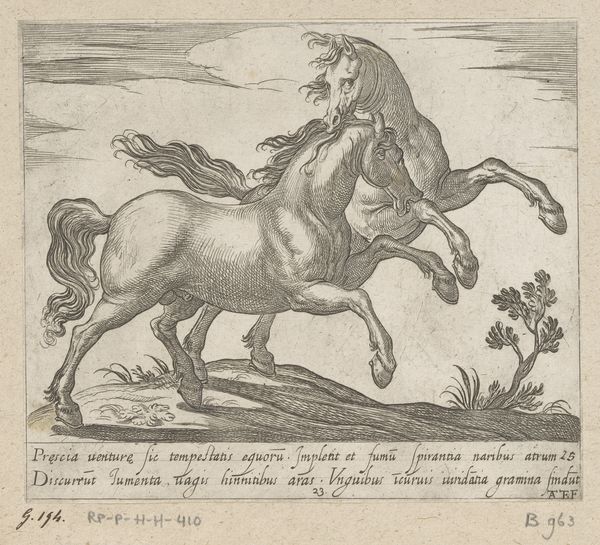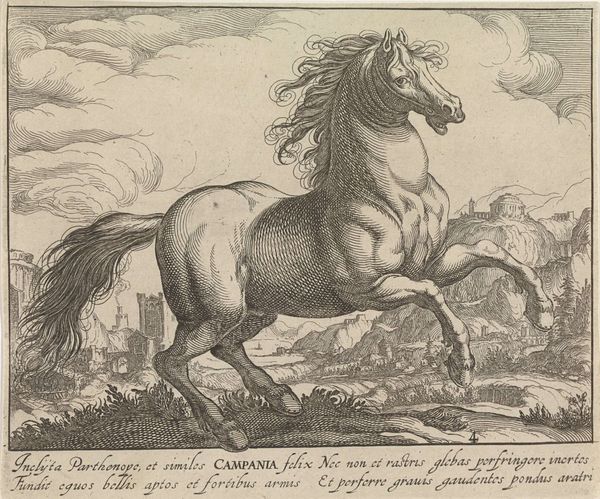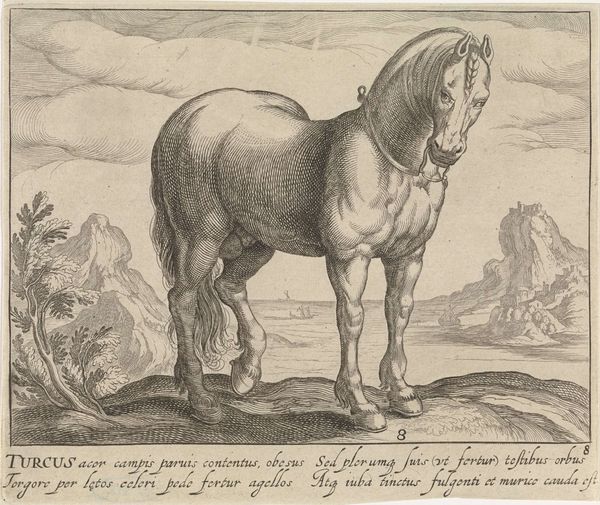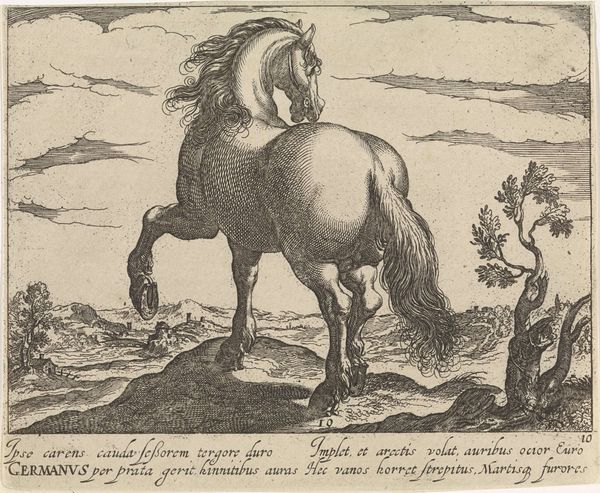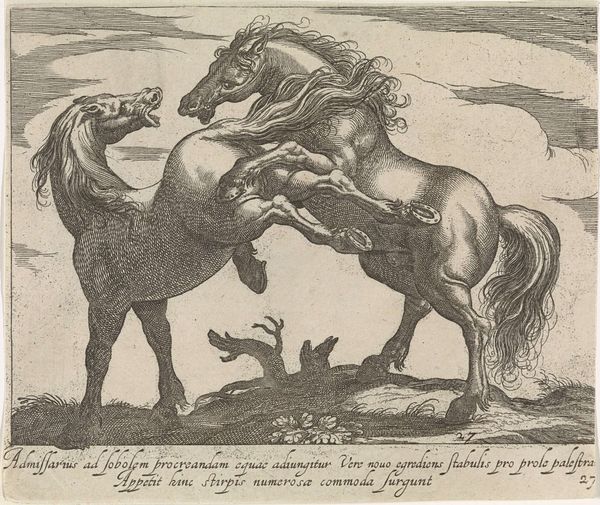
#
light pencil work
#
pen sketch
#
pencil sketch
#
old engraving style
#
personal sketchbook
#
ink drawing experimentation
#
pen-ink sketch
#
horse
#
pen work
#
sketchbook drawing
#
sketchbook art
Dimensions: height 141 mm, width 165 mm
Copyright: Rijks Museum: Open Domain
Editor: So, this is Antonio Tempesta’s “Steigerend paard van achteren gezien voor een zeegezicht” – or, "Rearing Horse Seen From Behind With a Seascape"—created around 1590. It's at the Rijksmuseum. I'm really struck by the power of this single horse; its energy almost vibrates off the page. What stands out to you? Curator: This rearing horse isn't merely a beast of burden or transportation. Consider the rearing horse as a potent symbol throughout history, embodying concepts like power, virility, nobility, and even unbridled passion. This specific portrayal – from the rear, with a landscape – is intriguing. Editor: Intriguing how? Curator: Note the choice not to depict the horse’s face, often a focal point. What emotions are typically conveyed through the horse's face in art? Instead, we're confronted with its muscularity, its raw power. It’s almost as though Tempesta intends to portray the 'idea' of a horse, its archetypal energy, rather than a specific animal. The city background enhances that symbolic charge, reminding us that even nature is not immune to order. Editor: I hadn't thought about the absence of the face so directly. How does this relate to our cultural memory of horses? Curator: Horses often appear in mythology and historical accounts – think of Alexander the Great’s Bucephalus. They bridge the natural and human worlds. This image may prompt consideration about mankind's urge to control raw natural power but also revere it for being free. We are given this intense muscular form against a dramatic sea, and a walled city… suggesting freedom, domination and beauty all at once. What do you think of the artist's use of line and shading? Editor: The line work does create a strong sense of depth and three-dimensionality... it adds to that feeling of power and tension. I see that tension now. Curator: Exactly. This seemingly simple sketch reverberates with a rich cultural and psychological landscape. Its enduring power lies in its ability to stir profound concepts within us. Editor: Definitely given me a lot to reflect upon about symbolic and historic representation!
Comments
No comments
Be the first to comment and join the conversation on the ultimate creative platform.



